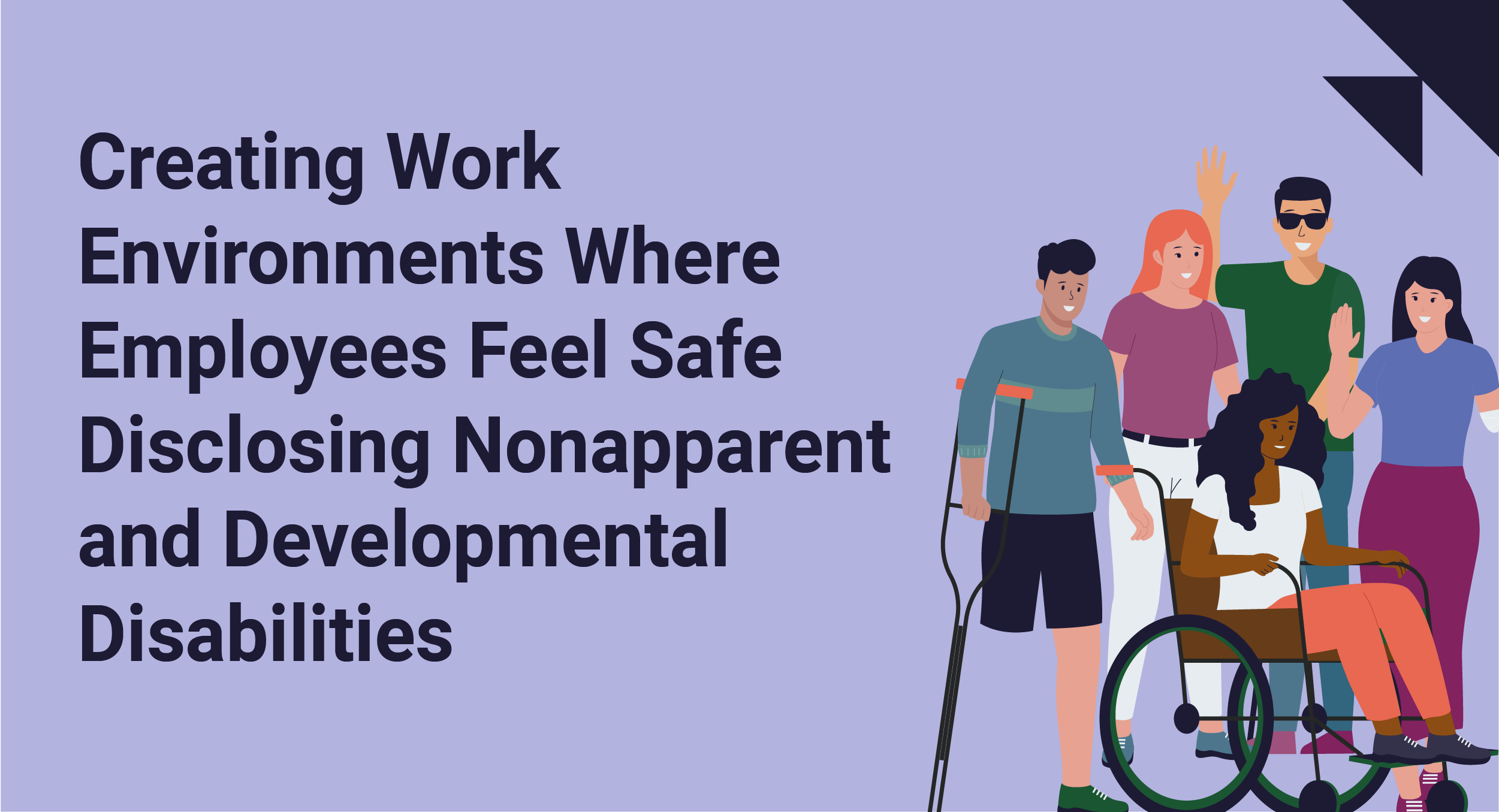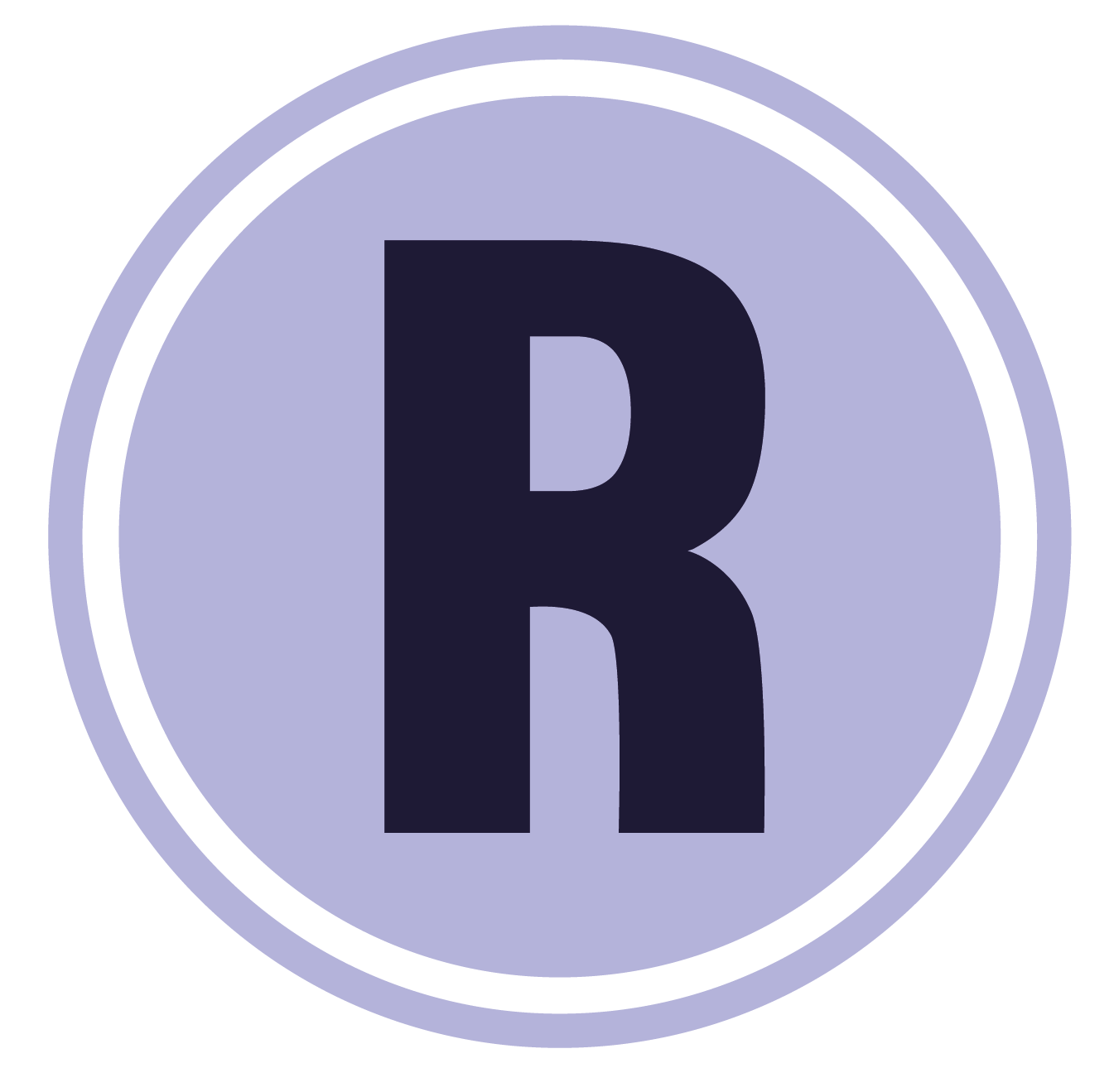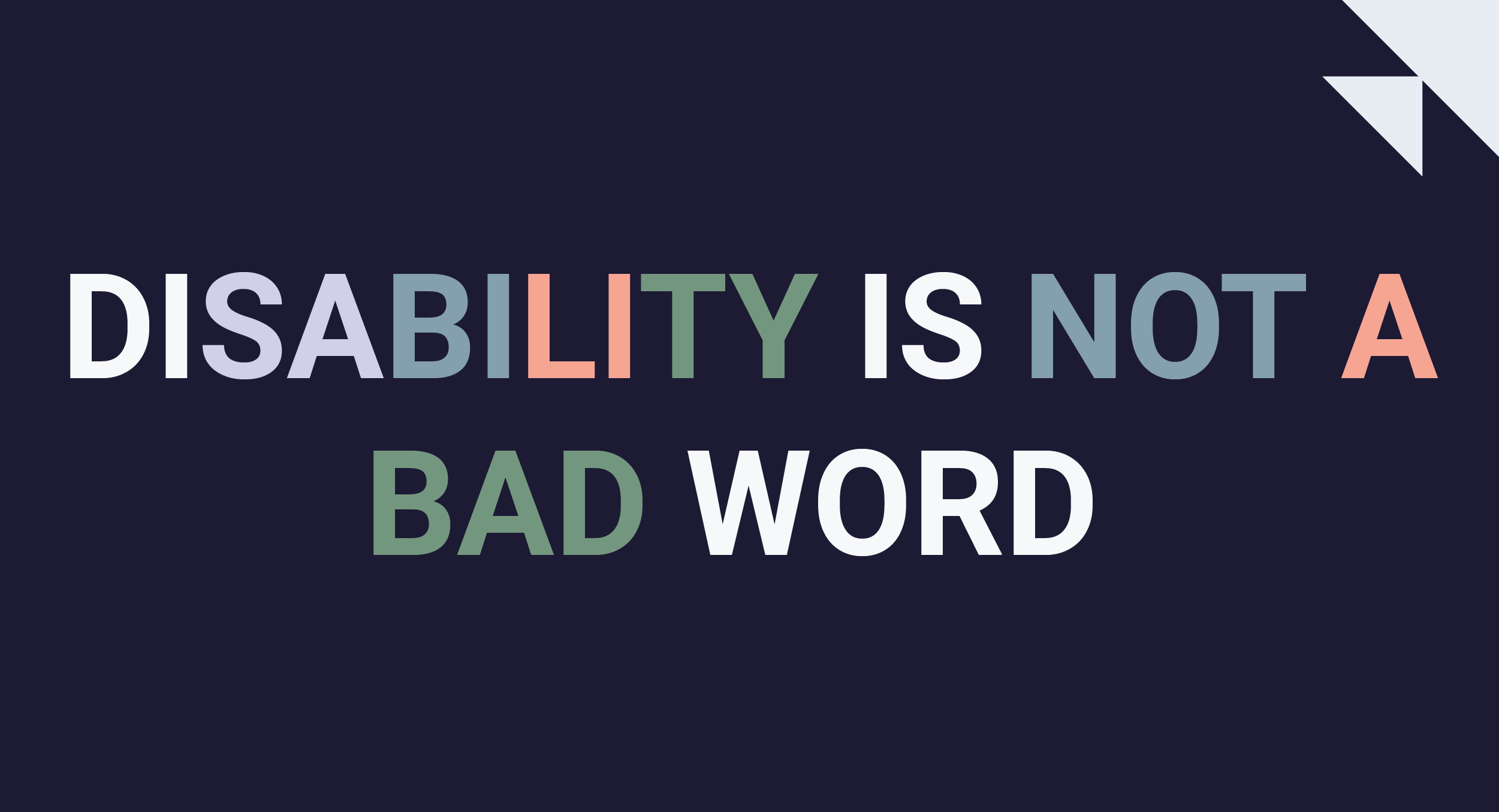3 Disability Employment Myths – and the Truths that Shatter Them
Contrary to what some think, employing disabled people doesn’t need to be difficult or expensive.

 Relay Resources
:
Apr 4, 2025 9:45:00 AM
Relay Resources
:
Apr 4, 2025 9:45:00 AM
We explore solutions to make your workplace more inclusive for all, including people with developmental disabilities.

March is Developmental Disabilities Awareness Month—a time to recognize and celebrate an important part of the disabled community.
So what are developmental disabilities? According to the U.S. Centers for Disease Control and Prevention (CDC), they’re a “group of conditions due to an impairment in physical, learning, language, or behavior areas.” Some common developmental disabilities include attention deficit hyperactivity disorder (ADHD), autism spectrum disorder (ASD), cerebral palsy, fragile X syndrome, Tourette syndrome, and specific learning disabilities like dyslexia.
As of 2020, nearly 8.38 million adults in the United States had a developmental or intellectual disability (most often acquired at birth.) It’s important to note that intellectual disabilities fall under the category of “developmental disabilities,” but not all developmental disabilities are inherently intellectual.

Image: State of Oregon Proclamation for Developmental Disabilities Month
There are two different ways to view a disability—through the lens of the medical model and via the social model. The medical model views developmental disabilities as individual problems needing medical intervention, while the social model sees them as societal barriers that need to be removed so that developmentally disabled people can be included in society.
The medical model’s focus is to identify developmental disabilities as individual deficits or problems (i.e., impairments) that need to be “fixed” or “cured” through medical or therapeutic interventions.
Medical model perspective: Views disability as a result of a person’s physical or mental limitations, separate from the social or environmental context
Medical model goal: To normalize or eliminate the perceived “deficiency” through medical treatments or interventions
Example: An autistic person is seen as having a “problem” that needs to be addressed through therapy or medication to improve their social skills or communication.
In the social model, the focus is to recognize that societal attitudes, structures, and environments create barriers that limit the participation and inclusion of people with developmental disabilities.
Social model perspective: Disability is seen as a result of societal structures and attitudes, rather than an individual’s inherent limitations.
Social model goal: To create a more inclusive and accessible society for everyone, including people with developmental disabilities, by removing barriers and promoting equal opportunities.
Example: Instead of focusing on changing an adult with autism to fit into a neurotypical workplace, the social model advocates for creating environments and systems that are accessible and supportive for autistic adults, such as providing sensory-friendly spaces or flexible workplace approaches.
People who have a developmental disability (and the companies they work for) often face an additional challenge when it comes to disclosure, as many developmental disabilities are also non-apparent disabilities. Many physical disabilities, like conditions that lead people to use a wheelchair or require a cane, are simply more evident—and many workplaces are already required to meet their physical space needs by following Americans with Disabilities Act (ADA) regulations. Yet many employers and co-workers might not even know how many people already have developmental disabilities because many of them are non-apparent and often not disclosed.
In fact, Forbes notes that only 4% of employees currently disclose a disability, even though one in four adults has a disability of some kind. Many employees might not want to disclose their disability for fear of discrimination by their employer, or simply because they don’t want to feel judged or that their employer will feel they are less capable than other employees. Yet for employees to do their best work, a flexible and inclusive work environment is needed. How, then, do employers encourage employees to disclose their disabilities when employees might not feel safe to do so?
Let’s take attention deficit hyperactivity disorder (ADHD) as an example, which is both a neurodivergent condition and a developmental disability. If someone has a neurodevelopmental disability like ADHD, they might not feel like it’s necessary to disclose it, depending on the severity of their disability.
ADHD is characterized by, according to the National Institute of Mental Health (NIMH), an ongoing pattern of one or more of the following types of symptoms:
ADHD also exists along a spectrum, per Psych Central. “The level of accommodations or benefits a person with ADHD may receive ranges depending on the severity of a person’s ADHD.”
Yet people with ADHD can also process multiple things at once and be extremely aware. As Conrad Anker, a well-known American climber and alpinist, recently wrote about his ADHD in a Threads reply to an article posted by The Economist: “Hyper situational awareness. It keeps me alive. Not a disability - simply my factory setting.”
The Economist article, “ADHD Should Not be Treated as A Disorder,” argues for adapting the systems in place rather than treating individuals as different or “disordered”—another example of the difference between the social model vs. the medical model for disability. “But for most people with ADHD,” the article continues, “the symptoms are mild enough to disappear when their environment plays to their strengths. Rather than trying to make people “normal,” it is more sensible—and cheaper—to adjust classrooms and workplaces to suit neurodiversity.” Symptoms will never disappear completely, but the environment can either highlight a disability or play to a person’s strength and showcase their ability.
As with all disabilities, the main problem often lies not in the disability itself, but in the way society and systems are not set up to be inclusive. ADHD is just one example of how workplaces can foster a culture where employees feel comfortable disclosing their disabilities. By adapting the environment and work culture to be more inclusive, rather than addressing needs on a case-by-case basis, organizations can create a more supportive and equitable workplace for everyone.
Some examples include: allowing people space for movement to get up and move around in the office or take a walk, offering flexible work environments like quiet spaces free from distraction or the ability to work from home at times, allowing fidget spinners or noise-canceling headphones, and taking brain breaks!
One company, Disclo (as in “disclosing” disabilities), is on a mission to make workplaces inclusive for everyone. The company makes it easy for employees to request accommodations for disabilities, mental health needs, pregnancy and maternity/paternity leave, long COVID, and more, while ensuring companies remain compliant with ADA and HIPAA requirements. Since they are a third-party verifier of a person’s individual disability, Disclo makes sure the process is discrete, anonymous, and not a burden on either the employee or the employer.
As co-founder Hannah Olson says, “With Disclo, we aim to eliminate the hesitation and complexity often associated with requesting workplace accommodations. By automating the process, we make it safer and simpler for employees to ask for support, ensuring that their needs are met without unnecessary stress or bureaucracy.”
While historically people have been reticent to disclose disabilities, things are changing. Disclo has found that “42% of Gen Z employees have requested accommodation, compared to just 13% of baby boomers. Gen Z is vocal about their needs, particularly around mental health, work-life balance, and neurodivergence. For many people in this generation, remote work is not just a preference but a necessity. The flexibility it offers allows them to manage anxiety, ADHD, and other challenges effectively. As companies enforce [return-to-work policies], leaders should anticipate an uptick in accommodation requests from this values-driven cohort.”
Creating system-wide accommodations and employing technology such as Disclo can help employees with developmental disabilities feel safer and more willing to disclose their disability and needs for an ideal work environment. By doing this, employers can create a larger pool of recruitment to pull from and ensure they’ll be competitive in a changing workplace.

Contrary to what some think, employing disabled people doesn’t need to be difficult or expensive.

What comes to mind with the term “disabled”? Do you imagine someone in a wheelchair? What about “disability”? What images, associations, or thoughts...